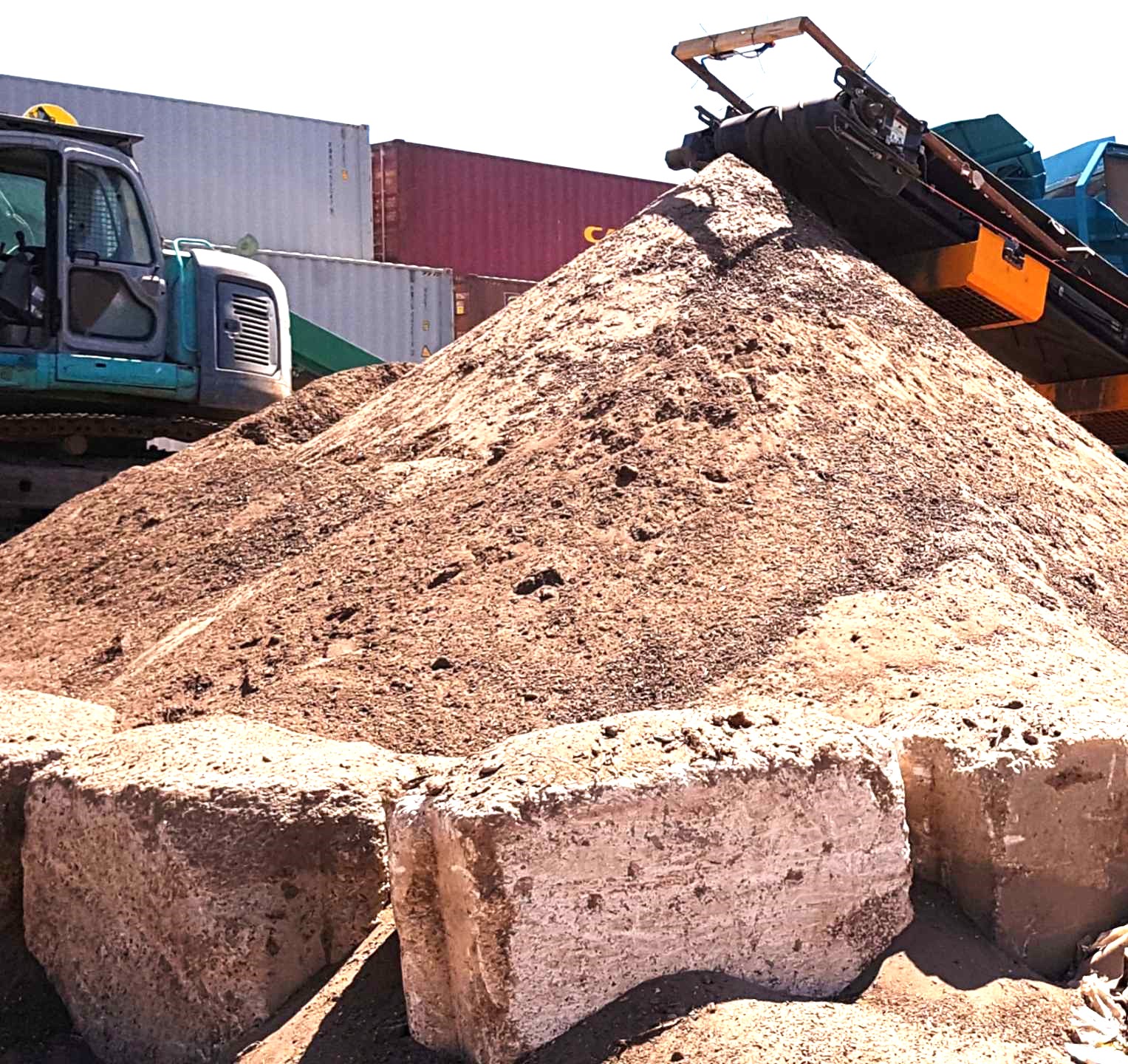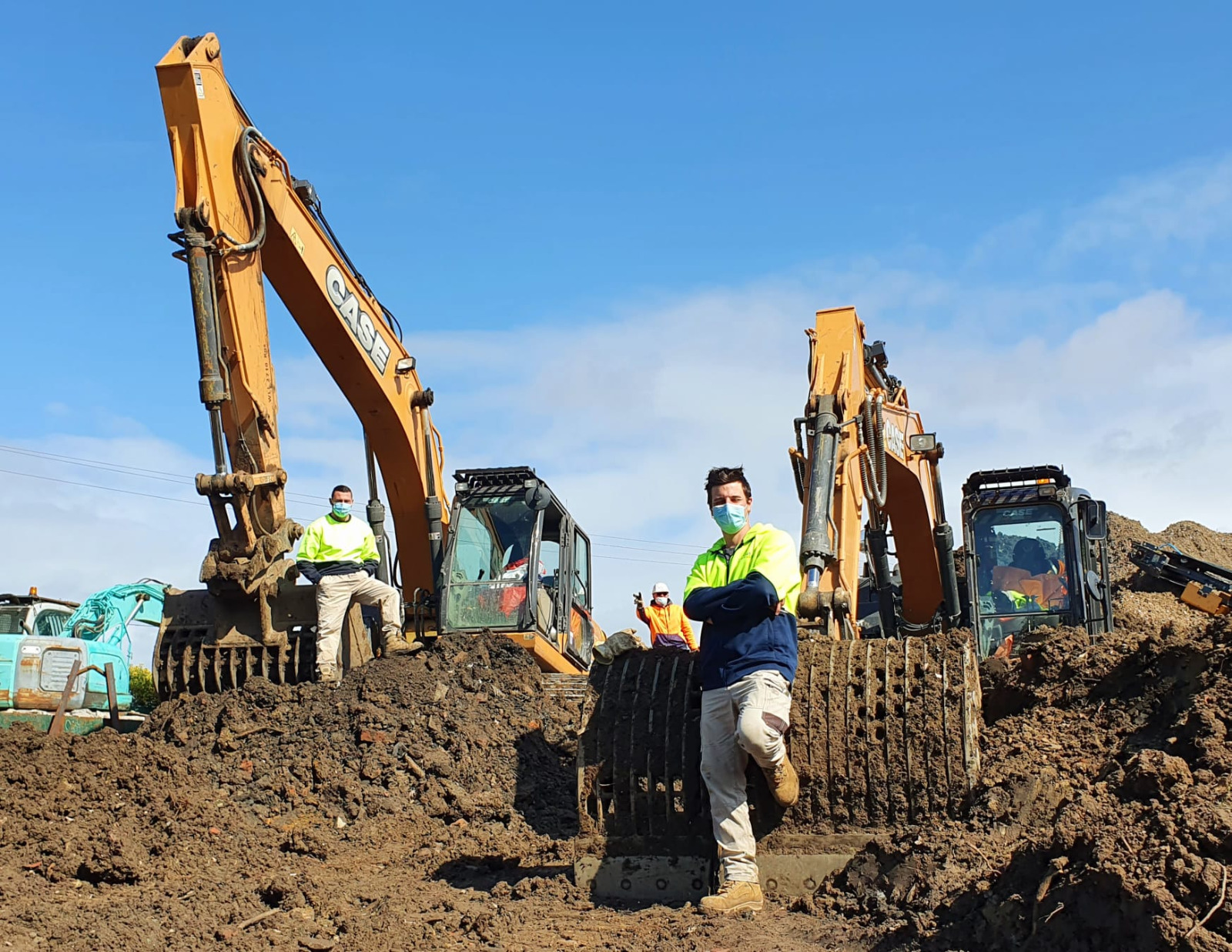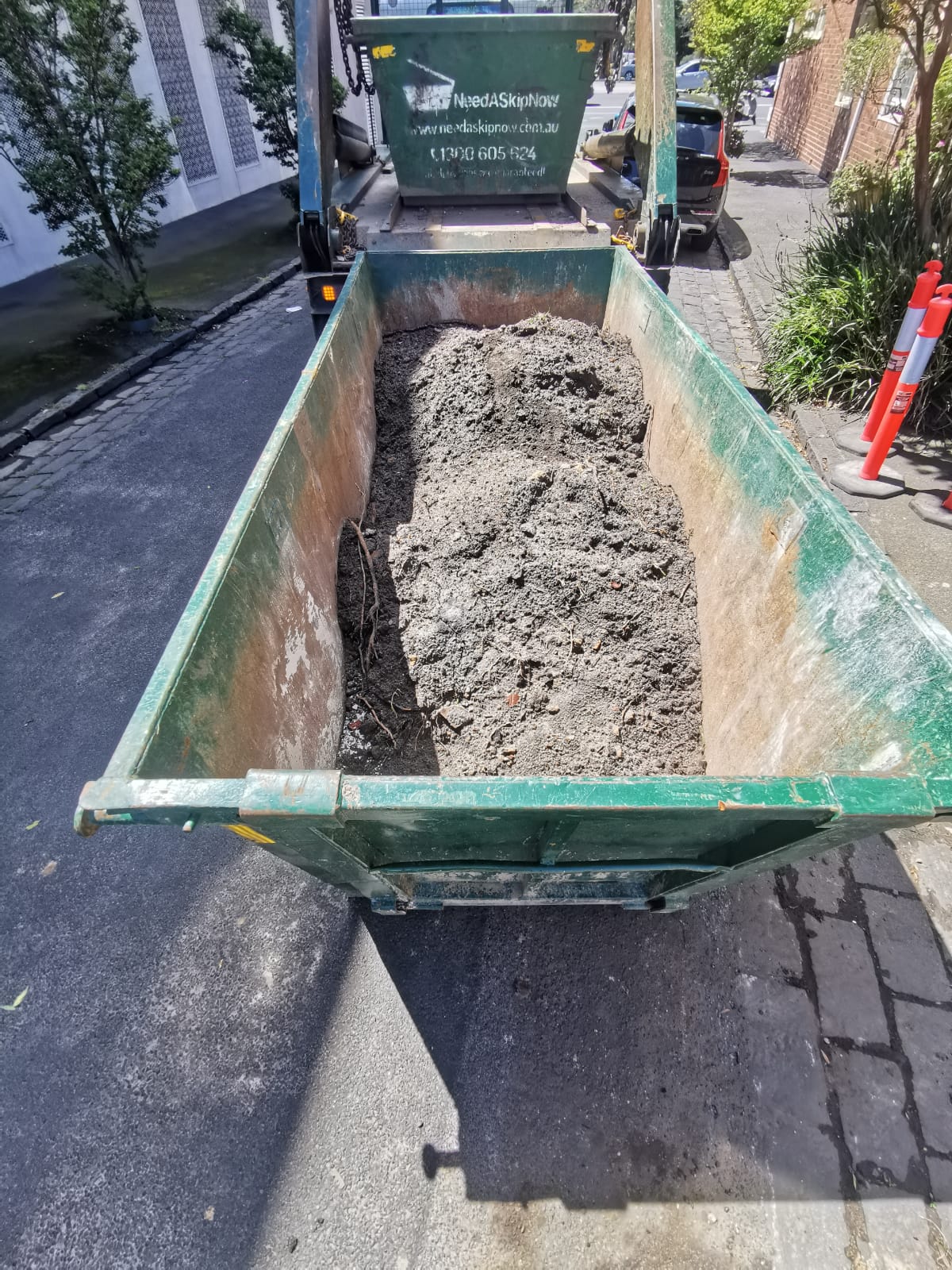Cleanfill vs Waste Transfer Station: A Guide to Soil Disposal in Melbourne
Who Will Accept Your Soil - Cleanfill Site or Waste Transfer Station
When it comes  to soil disposal in Melbourne, two facility types come to mind: Cleanfill sites and Waste Transfer Stations. Both have their unique advantages, entrance criteria, and more, but choosing the right one can make a significant difference in cost, environmental impact, and the type of soil waste you can dispose of.
to soil disposal in Melbourne, two facility types come to mind: Cleanfill sites and Waste Transfer Stations. Both have their unique advantages, entrance criteria, and more, but choosing the right one can make a significant difference in cost, environmental impact, and the type of soil waste you can dispose of.
Read on to discover the key differences between Cleanfill sites and Waste Transfer Stations, and find out which one is the best fit for your soil disposal needs in Melbourne.
Table of Contents
-
Introduction
- Overview of Soil Disposal in Melbourne
- Importance of Choosing the Right Facility
-
Key Definitions
- What is Cleanfill?
- What is A Cleanfill Site?
- What is a Waste Transfer Station?
-
Key Differences Between Cleanfill Sites and Waste Transfer Stations
- Type of Customer Accepted
- Type of Soil Accepted
- Types of Vehicles Accepted
- Cost Comparison
- Location Comparison
- Different Intent and Treatment of Soil
- Services Offered by Cleanfill Sites vs. Waste Transfer Stations
- Ease of Tipping Comparison
- Price Comparison
- Flexibility Comparison
-
Alternatives: Skip Bin Hire for Soil Disposal
- Introduction to Skip Bin Hire
- Benefits of Using Skip Bins for Soil Disposal
-
Conclusion
- Factors to Consider When Choosing Between Cleanfill Sites and Waste Transfer Stations
Key Definitions
What is Cleanfill?
Cleanfill refers to uncontaminated soil, rock, sand, or gravel that has not been mixed with any other waste. It’s the type of soil that can be reused or recycled without causing harm to the environment. Cleanfill sites accept this type of soil and often offer services to recycle or repurpose it.
What is a Cleanfill Site?
A cleanfill site is a designated area where you can dispose of clean, natural materials like soil, sand, rocks, or clay.
It’s important that these materials are free from contaminants - that means no rubbish, no wood waste, no metals, and no vegetation. Essentially, if you’ve dug it up from the ground and it’s not mixed with anything else, it’s likely suitable for a cleanfill site. It’s a great way to ensure that natural materials are disposed of responsibly and can often be recycled or reused.
What is a Waste Transfer Station?
A Waste Transfer Station, on the other hand, is a facility .
where waste is temporarily held before it’s transported to a landfill or recycling facility. These stations accept a variety of waste types, including general waste, builders waste, Construction and demolition waste, and so on. In the context of soil disposal, Waste Transfer Stations can handle both clean and mixed soil, which they separate from other materials, clean, and then take to cleanfill sites for further repurposing
Our Waste Transfer Station in Clayton South is one such example. It's essentially a recycling yard, where we bring all our customer's skip bins and where we accept general public to tip their trailers, vans and trucks. Our recycling team separates all the materials into waste categories, such as:
- soil
- green waste
- concrete
- timber
- metal
- general waste
We then take each type of material into a designated facility for further recycling and processing.
Key Differences Between Cleanfill Sites and Waste Transfer Stations
-
Type of Customer Accepted
Cleanfill sites are typically accessible only by large trucking or transport companies like plant hire companies. This is because these sites are highly regulated and only require large volumes of cleanfill for their operations. Skip Bin trucks are not allowed into Cleanfill sites, only registered and authorised large trucks.
On the other hand, Waste Transfer Stations are accessible to all, including individuals and businesses. This makes them a more versatile option for a wider range of customers.
At our Waste Transfer Station in Clayton South, we welcome all types of customers, whether you're a homeowner doing a bit of gardening or a builder on a big construction project. You can come with a trailer, van, truck, skip bin truck and so on. For our customers' convenience, we also have a conrete pad, to ensure your vehicle won't get any punctures during your visit.
-
Type of Soil Accepted
Cleanfill sites have extremely strict regulations and only accept clean, uncontaminated soil. The soil must not be mixed with any other materials. In contrast, Waste Transfer Stations accept a variety of waste types, including soil that can be mixed with rubble, concrete, green waste and other materials.
-
Type of Vehicles Accepted
At Cleanfill sties, only registred trucks are typically accepted. This is due to the large volumes of soil that these sites handle. Waste Transfer Stations, however, accept a large variety of vehicles. You can come with a trailer, van, truck, skip bin truck and so on.
-
Cost
To dispose of soil at a Cleanfill site, you would need to pay:
- Plant Hire Company to hire their trucks
- Hire an Excavator for the day to fill the above trucks
- Pay for actual soil disposal once the truck reach the Cleanfill Site. The cubic meter rate for clean soil disposal will be relatively small, however overall cost will be magnified once the above plant hire and machinery hire costs are added up.
To dispose of soil at a Waste Transfer Station, you would need to pay:
- Only for the waste that you bring in.
- You will be paying a higher rate per cubic meter of soil but saving significant amount on transport and machinery hire fees as you are essentially taking care of your own transport.
-
Location of Your Soil Drop Off
Waste transfer stations are scattered around Melbourne in very accessible locations, including our own Need A Skip Now Waste Transfer station in Clayton South. Most cleanfill sites are often located far away, hence if you are travelling there with your trucks or hiring trucks from plant hire, you need to allow sufficient time and budget for the transportation.
With recent diesel prices consistently climbing up, your transport cost will be a significant component of the overall price of your soil carting.
-
Different Intent and Treatment of Soil
Cleanfill sites focus on recycling and repurposing soil, which minimizes environmental impact. As they only accept CLEAN soil, their main focus is to repurpose this soil or material to the end buyer in the market. Some examples include, but are not limited to:
· Supplying soil to some sites, which need leveling
· Repurposing soil into organic waste
· Reporposing soil into topsoil
Waste Transfer Stations aim to reduce landfill waste by recycling where possible. However, they also deal with mixed soil, which requires careful handling to prevent environmental harm. In particular, in our waste transfer station, we first separate the soil from other materials, put it through the trommel to separate it from finer little particles of whatever soil was mixed with before, and ensure that the soil is clean enough to be accepted by the Cleanfill site.
Cleanfill sites primarily offer soil disposal services in large quantities of completely clean material. In contrast, Waste Transfer Stations provide a broader range of services, including general waste management and recycling.
-
Ease of Tipping Comparison
Tipping your soil at Cleanfill Facility is an undertaking to say it lightly.
If you are not registered with your trucks at one of the facilities, you will need to contract a plant hire company and hire an excavator, large enough to fill trucks fast. Therefore prepare a sufficient budget for plant hire, excavator hire, transport fees and soil disposal fees.
Tipping at the Waste Transfer Station, which accepts soil is very easy, and accessible to all, from mum and dad with a small trailer, to a landscaper, builder, or any tradie. Ideal for smaller quantities of soil and for customers, who already have their own trailers and are in the area.
-
Price Comparison
For small quantities of soil – cleanfill sites are not an option, as you cannot take your trailer there, therefore there is no comparison with a Waste Transfer Station.
However, when it comes to large quantities of Clean Soil, you need to take quotes from plant hire companies, and excavator hire and compare that to a Waste Transfer Station price. For instance, at our Clayton South Waste Transfer Station, as of 2023 – our cubic meter rate for soil is $120. Therefore each project needs to be costed separately to work out the best value for time and money for you.
-
Flexibility
There is certainly no comparison in flexibility between the Waste Transfer Station and the Cleanfill site. Waste Transfer Stations win - hands down as you arrive, tip, pay and leave. With Cleanfill Site – booking of trucks, hiring of equipment, ensuring your soil is in tip-top condition, making it an undertaking.
Therefore, tipping at Cleanfill Sites - only makes sense for large quantities of soil and only clean soil.
Alternatives: Skip Bin Hire for Soil Disposal
If Cleanfi ll Site disposal seems too complicated for you and you also don’t have your own transport to go to the Waste Transfer station, we’d like to discuss an alternative to the above two methods of soil disposal.
ll Site disposal seems too complicated for you and you also don’t have your own transport to go to the Waste Transfer station, we’d like to discuss an alternative to the above two methods of soil disposal.
Skip bin hire for soil disposal is one of the easiest ways to dispose of soil from your projects.
At Need A Skip Now, we offer a large range of skip bins in various sizes, catering to different project sizes. For more information on how Skip Bins can be your best friends for soil disposal, read our latest blog on this topic.
The cost of hiring a skip bin will vary depending on the size of the bin and your suburb. It’s always a good idea to contact us directly for the most accurate and up-to-date pricing information.
Conclusion
Whether you choose a Cleanfill site or a Waste Transfer Station for your soil disposal in Melbourne largely depends on the type and quantity of soil you have. By understanding their differences and capabilities, you can make an informed decision that benefits both your project and the environment. If you found this guide helpful, feel free to share it with others who might benefit from this information. For more information or assistance with your soil disposal needs, get in touch with us at Need A Skip Now today.